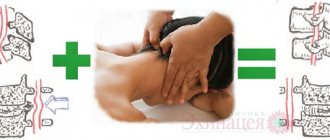Periodic or regular increases in the level of intracranial pressure are accompanied by many negative symptoms that indicate the development of pathological processes in the body. An increase in the volume of cerebrospinal fluid causes compression of brain structures, which in the absence of adequate therapy leads to serious complications. Today, there are a large number of methods for reducing high cranial pressure, used in both children and adults. How to reduce intracranial pressure to eliminate the risk of irreparable consequences?
Which doctor will help determine the level of ICP?
The level of cranial pressure is diagnosed for the purpose of prevention in patients with pathologies that can lead to its increase. In addition, cranial pressure is measured according to indications, that is, in the presence of certain symptoms.
To determine the indicators, you should contact a neurologist and ophthalmologist. The neurologist will initially conduct an examination, during which he evaluates complaints about the characteristic symptoms of the disease. After assessing the condition, if necessary, the specialist prescribes additional diagnostic methods and consultation with other specialists. When examined by an ophthalmologist, signs of increased intracranial pressure can be identified:
- dilatation of retinal vessels;
- swelling of the optic nerve head.
Detection of pathological changes requires additional hardware methods to accurately determine the level of ICP. The diagnostic method is selected individually depending on the patient’s condition. In most cases, the measurement is carried out non-invasively.
Compresses
Often, increased intracranial pressure occurs due to spasms of cerebral vessels. In order to expand them, normalize blood circulation and relieve headaches, traditional medicine recommends using compresses, but this must be done in a certain way:
- Pure alcohol is mixed with camphor oil in a one to one ratio. In this case, both products are taken in 45-50 ml.
- The resulting composition must be applied to the patient’s head with smooth movements.
- To provide warmth, the patient's head must be covered with a rubber cap. Another option is a plastic bag, and a wool scarf or a very warm scarf is tied over it.
- The procedure should be performed before bed, and in the morning you should wash your hair thoroughly.
To achieve results, this method should be repeated at least ten times in a row.
How to identify the problem yourself?
It is impossible to determine the level of cerebral pressure at home, since this procedure requires special equipment. Normal values for an adult are 100-150 mm. rt. Art., if they increase, then the person experiences negative symptoms. You can independently identify intracranial hypertension using the following signs:
- regular headaches;
- nausea, vomiting not associated with food intake;
- causeless weakness, fatigue;
- memory loss;
- attention disorder;
- an attack of dizziness is accompanied by fainting;
- decreased peripheral visual acuity;
- sharp fluctuations in blood pressure;
- weak pulse.
The headache is long-lasting and constant, worsening at night and after waking up
The main manifestation of the pathology is intense headaches that are not amenable to medication. The pain syndrome is bursting in nature and is localized in the frontal, occipital, and temporal regions.
No ads 1
Basic reduction methods
The main goal in the treatment of cranial hypertension is to reduce pressure using conservative methods, the effect of which is to restore cerebral circulation through medication, lifestyle adjustments and special exercises.
To obtain an optimal and long-lasting effect, it is necessary to remove the causes that provoke the disease. Depending on the stage of the pathology and the patient’s condition, the specialist selects treatment tactics and therapeutic measures. Treatment can be carried out both in hospital and at home.
If the increase occurs against the background of brain tumors, then the pressure can be reduced exclusively by surgical methods, when there is a high risk of complications. For this purpose, the following neurosurgical types of lowering ICP are used:
Treatment of intracranial pressure in children
- Shunting (outflow of cerebrospinal fluid occurs through a catheter, which is inserted into the ventricles of the brain).
- Decompression craniotomy (removal of part of the cranial bone to relieve compression of the brain).
- Lumbar puncture (excretion of cerebrospinal fluid through a catheter that is inserted between the lumbar vertebrae).
- Ventricular puncture (outflow of cerebrospinal fluid through a puncture of the posterior or lateral horn of the ventricle).
What is intracranial pressure
What is intracranial pressure? ICP is an indicator that shows the pressure of cerebrospinal fluid (CSF) on the brain. Liquor, in turn, is a liquid formed from clusters of small vessels in the brain, which flows in the so-called “ventricles” of the brain. It is the pressure of this fluid that is commonly called intracranial pressure. If the amount of cerebrospinal fluid decreases, the pressure decreases, and, conversely, with an increase in fluid volumes, the pressure increases. In most cases, a healthy person has normal intracranial pressure, and deviations from the norm can be of two types: increased or decreased.
Drug treatment
Treatment tactics depend on the cause that provoked the increase in indicators, as well as on the severity of the disease. Conservative therapy involves the complex use of drugs that affect all pathological mechanisms, so taking one drug will not help get rid of increased intracranial pressure.
The specialist prescribes medications from various pharmacological groups that affect certain pathological mechanisms
Drug treatment is prescribed to prevent the development of complications and when symptoms of increased intracranial pressure increase, namely:
- paroxysmal severe headache;
- visual impairment;
- nausea accompanied by vomiting;
- fainting;
- severe weakness;
- changes in blood pressure;
- heart rhythm disturbances.
Increased intracranial pressure leads to disruption of the mechanisms of adaptation to external stimuli, so the slightest nervous or mental stress leads to intense headaches.
Most diseases that provoke an increase in cerebral pressure in an adult can be treated well with medications, which makes it possible to avoid surgical intervention. Patients are prescribed complex treatment with drugs whose action is aimed at normalizing cerebral circulation and activating the processes of removing excess fluid from the body.
No ads 2
Vasodilator medications
The therapeutic effect of this group of drugs is to expand the vascular lumen, which reduces pressure, improves the outflow of cerebrospinal fluid and restores cerebral circulation. To quickly stabilize cerebral pressure values, intramuscular injection of nicotinic acid is used in a dosage of 2 to 4 ml. Instant expansion of the lumen of blood vessels is accompanied by redness of the skin with a characteristic tingling sensation.
The following drugs can be used to eliminate cerebral hypertension:
- Sermion (reduces vascular resistance, improves cerebral hemodynamics).
- Cavinton (promotes better outflow of cerebrospinal fluid, accelerates metabolic processes in the brain).
- Cinnarizine (lowers the tone of vascular smooth muscles).
Corticosteroids
With increased intracranial pressure, corticosteroids are prescribed, which reduce the production of cerebrospinal fluid in the ventricles of the brain, thereby reducing its volume in the cavities of the brain. They are indicated for severe inflammation and a high risk of cerebral edema.
The most used representatives of the group:
- Dexamethasone (has anti-inflammatory, antiallergic effect).
- Prednisolone (inhibits the inflammatory process, has antiallergic properties).
[node:field_similarlink]
Diuretics
It is the most popular group of medications among tablet forms for lowering intracranial pressure. Diuretics have a pronounced diuretic effect, due to which excess fluid is released, causing an increase in cerebral pressure. So, the following drugs will help normalize the indicators:
- Furosemide and Lasix are used to achieve a rapid therapeutic effect and actively remove sodium from the body.
- Diacarb. Increases the excretion of potassium and sodium ions in urine. The use of the drug for high ICP is associated with inhibition of the enzyme carbonic anhydrase in the ventricles of the brain and a decrease in the secretion of cerebrospinal fluid.
- Glycerol. An osmotic diuretic removes excess fluid from the intercellular space. It is used once, the maximum therapeutic effect is observed after 1.5 hours.
Painkillers
To relieve severe pain caused by high blood pressure, you can take painkillers. Patients are recommended to use combination drugs that, in parallel with the analgesic effect, exhibit an anti-inflammatory effect, preventing the occurrence of migraines. Among them are:
- Ketonal. Suppresses the activity of inflammatory mediators, reduces pain.
- Nimesil. Reveals analgesic, antipyretic and anti-inflammatory effects.
- Treximed. Promotes the expansion of the lumen of blood vessels, eliminates painful manifestations.
Important! Medicines containing amino acids will help relieve the load on the brain. Taking pills can reduce the effects of the negative effects of cerebral hypertension due to the production of hormones, enzymes and proteins. The following tablets prevent the destruction of cellular structures: Cerebrolysin, Glycine, Citrulline.
Causes of increased intracranial pressure
It should be noted that increased intracranial pressure may be a consequence of an excess amount of cerebrospinal fluid, which puts pressure on the brain.
However, this is not an independent disease and is caused by completely different diseases. Some of the main reasons for increased ICP are:
- congenital pathologies;
- various types of inflammation: meningitis, encephalitis, hydrocephalus;
- violation of metabolic processes, which reduces the amount of absorbed fluid;
- a large amount of excess fluid in the body, which causes the amount of cerebrospinal fluid to increase;
- infectious diseases: bronchitis, otitis, gastroenteritis, malaria;
- brain hypoxia as a result of various injuries;
- severe intoxication of the whole body;
- excess vitamin A;
- excess weight.
In addition, a common cause of high blood pressure is taking certain hormonal medications, such as thyroxine.
IMPORTANT!
Normally, intracranial pressure ranges from 7.5 to 15 mmHg. Values higher or lower indicate deviations from the norm. Pressure above 30 mmHg leads to cessation of blood circulation and brain activity.
Traditional methods of correction
What should patients do to independently stabilize ICP? You can lower the level of cranial pressure at home using folk recipes. It is recommended to use herbs and plants that have sedative and vasodilating properties. However, non-traditional treatment is used for chronic intracranial hypertension in remission.
The following non-traditional remedies will help reduce intracranial pressure:
- Lavender infusion. 1 tbsp. l. place dry raw materials in a container and pour 500 ml of boiling water. Leave for an hour, then remove the sediment. Take 3 times a day, 1 tbsp. l. Therapeutic course - 3 weeks.
- Decoction of bay leaves. To prepare, you need to prepare several leaves, which are filled with 1.5 liters of water. Bring the mixture to a boil and use as inhalation. Course - 14 days.
- Clover tincture. Dried flowers of the plant should be taken in an amount equal to 0.5 liters of container. Fill with alcohol so that the liquid covers the dry raw materials. Leave for 2 weeks, then filter, take the tincture 3 times a day, 1 tsp. The duration of the course is 30 days.
Birch sap has a diuretic effect, due to which it normalizes ICP parameters
Treats intracranial hypertension with a mixture based on honey:
- To prepare, take 150 ml of fresh lemon juice, 350 g. liquid flower honey and 2 cloves of chopped garlic.
- Mix the ingredients thoroughly.
- Leave the mixture in a dark, cool place for 10 days.
- Take in the morning, in the evening 60 minutes after a meal at a dose of 1 tsp.
To quickly eliminate headaches accompanying a hypertensive attack, use lavender essential oil. A few drops of the product should be applied to the temporal area and rubbed in with light massage movements for several minutes.
No ads 3
Infusion of plantain leaves
In folk medicine, fresh plantain leaves have been used for a long time for the aseptic treatment of boils, wounds and abscesses, but few know about the property of this plant to reduce the level of ICP. The hypotensive properties of plantain are due to the fact that this plant contains a huge amount of phytoncides, tannins, polysaccharides, organic acids, as well as carotenoids, flavonoids, vitamins K, C and many other biochemical active substances. Plantain helps hypertensive patients not only when ICP increases, but also with vascular and heart diseases. It also has diuretic properties and reduces the burden of edema.
Typically, plantain infusion is prepared from the leaves of the plant. In order to obtain a sufficiently effective herbal medicine, use the following recipe:
- crushed plantain leaves (3-4 tablespoons) are mixed with not very hot water (half a liter);
- the resulting mixture is infused for a day;
- To achieve the required clinical effect, you should use the infusion several times a day, one or two spoons.
Gymnastic exercises
Therapeutic exercises for intracranial hypertension can become an alternative to certain drugs during conservative therapy, as well as a prophylactic agent to reduce attacks of the disease. Depending on the cause and stage of the pathological process, the specialist selects techniques that have lowering properties of brain pressure and alleviate the condition of patients.
A specially developed set of gymnastic exercises is aimed at normalizing ICP, relieving pain and increasing blood circulation.
The most effective exercises to reduce high cerebral pressure:
- We alternately tilt our heads to the right and left sides, forward, backward, pulling the chin to the chest. Next, we slowly rotate the head in any direction. Movements should be smooth, the number of repetitions of exercise elements should be an average of 20 times.
- Grasp the lower occipital region with both hands so that the thumbs are located on the neck muscles, at the level of the earlobe. Then, for 15 minutes, fingers should be rubbed over the muscles from top to bottom to improve the outflow of cerebrospinal fluid. After the exercise, heaviness in the temporal and occipital areas decreases.
- Grasp a small round stick with both hands and place it behind your head. For 15 minutes, with light pressure, we move the stick over the neck muscles and lower occipital region.
Important! In the first days of the gymnastics course, painful sensations may occur due to tension in the neck muscles, but subsequently, when performing the exercises, the discomfort will disappear.
Prevention
There are several preventive rules on how to get rid of intracranial pressure:
- exercises (regularity is important);
- mandatory adherence to the daily routine;
- undergoing sanatorium-resort treatment;
- timely treatment of the underlying disease;
- following a specially designed diet;
- getting rid of bad habits;
- avoiding overheating.
Also, to prevent ICP, it is recommended to use a collection of motherwort and lemon balm: 200 mg of the raw material is poured into two liters of boiling water. All this should brew for about a day. Then the mixture is filtered and taken three times a day, one glass.
External methods of stabilizing ICP
In alternative medicine, there is a wide list of effective external methods that can provide first aid for intracranial hypertension:
- Bath with linden. It is necessary to take baths with linden decoction in a sitting position, so for preparation you need to take 4 cups of dried raw material per 10 liters of hot water.
- Rubbing the ears with cool water. The procedure is repeated many times until you feel better.
- Foot bath with mustard. Place 2 mustard plasters in hot water, lower your feet and soak for 15-20 minutes.
To stabilize the condition, craniosacral therapy is used, which consists of influencing certain points located in the temporal and occipital regions. Due to the gentle effect on the skull, ICP decreases and well-being improves.
High intracranial pressure is a dangerous condition, as it can lead to the development of emergency complications, including death. To stabilize it, there are a large number of medications and folk remedies that can eliminate the manifestations of pathology, but they do not affect the main etiological factor. Therefore, if signs of the disease occur, it is necessary to visit a specialist for diagnosis and further selection of the optimal treatment regimen.











